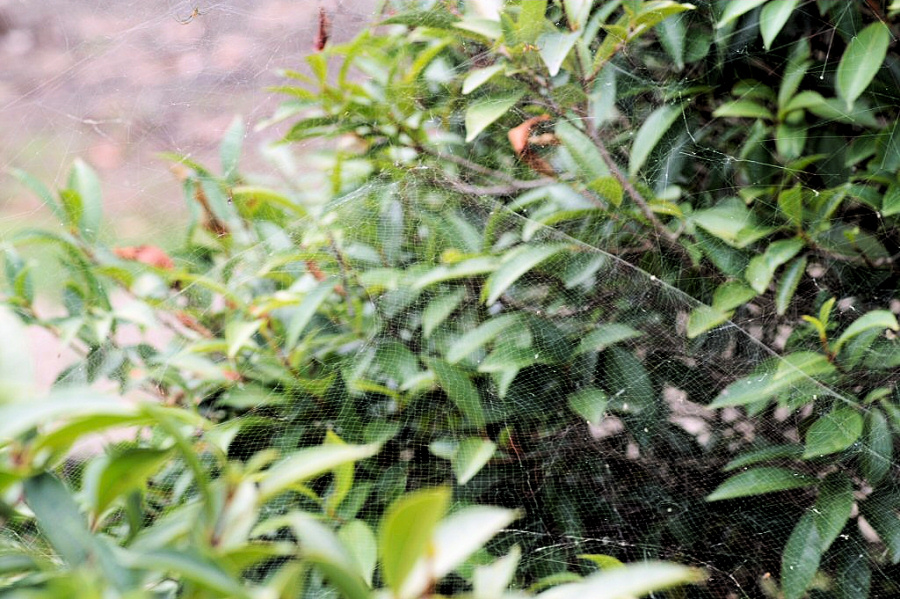

These spiders are closely related to orb-web spiders and are commonly known
as Tent spiders, tent-building or dome-web spiders. The tent-web could be
considered as a primitive orb-web.
The tent shaped web is made of non-sticky, closely woven threads. The
distinctive webs are not easily recognized as orb-webs because they are woven on
a horizontal pane with a network of supporting threads above them. These spiders
often live in colonies.
With a few exceptions these spiders are small. Some species are communal; if
the webs not actually adjoin, there are usually many to be found in the area.
ß Home
| Cyrtophora mollucensis. This spider is a spectacular black and
white spider and the female can have a body length up to 20 mm. She can be found in the tropical parts of Australia. The huge communal webs may extend 4 meters across. Immature females have green legs and areas of bright orange on their body. The tiny male (size 4 mm) has an orange head-breast part (cephalothorax) and the abdomen patterned in white, black and yellow. The egg-sac is pear-shaped and made of dirty white silk. |
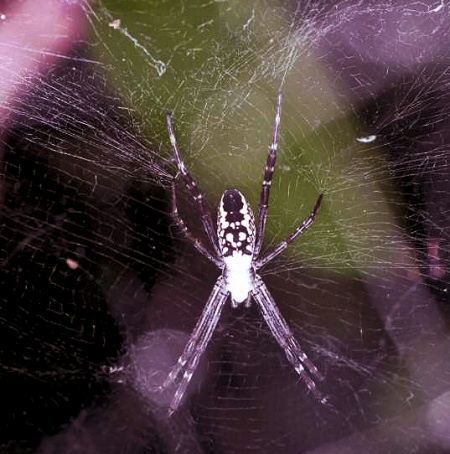 |
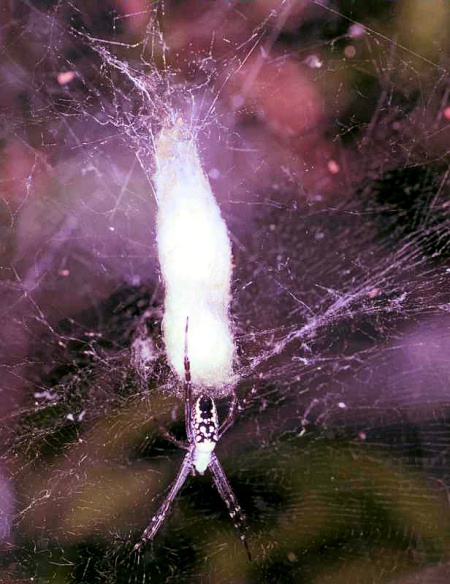 |
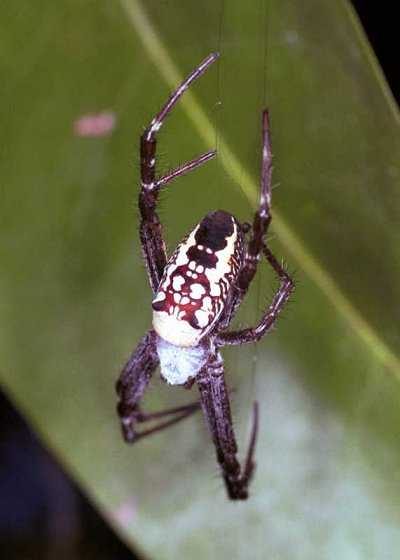 |
| Cyrtophora mollucensis with cocoon | Cyrtophora mollucensis |
 |
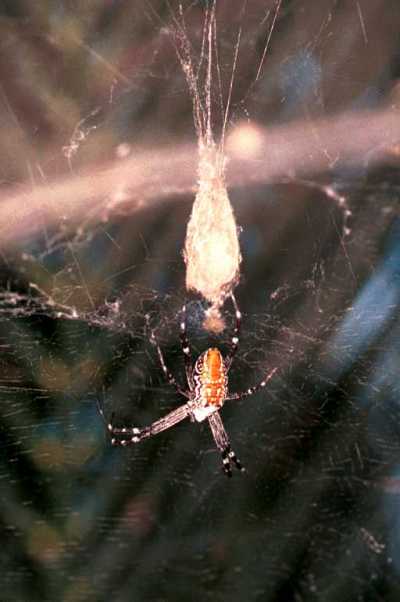 |
| Cyrtophora mollucensis | Cyrtophora mollucensis with cocoon |
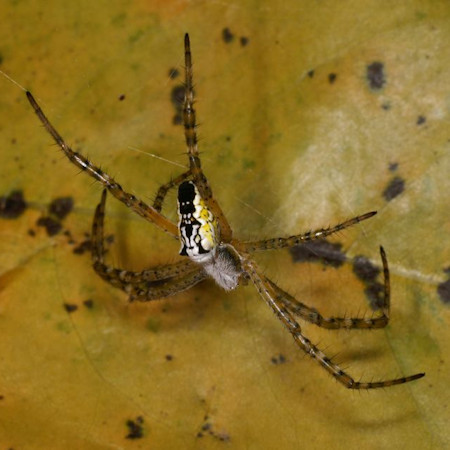 |
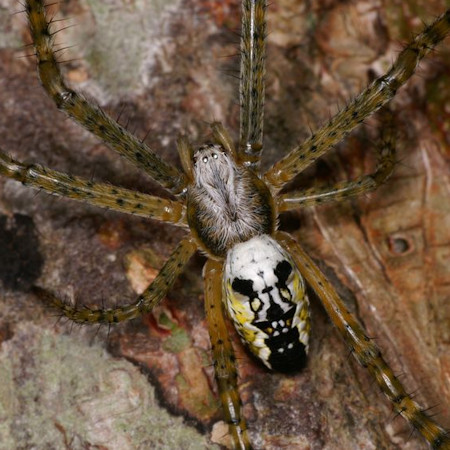 |
| Young Cyrtophora mollucensis | Young Cyrtophora mollucensis |
Cyrtophora exanthematica is known as pan-web spider because they construct their webs in the shape of a pan 50 cm above the ground. Their colouring is variable brownish. |
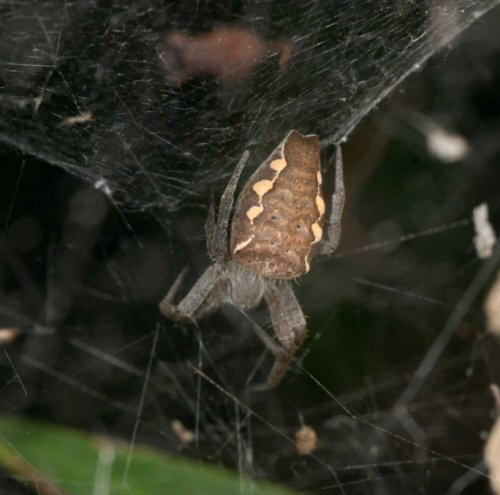 |
| Cyrtophora exanthematica (by Jurgen Otto) | Cyrtophora exanthematica (by Jurgen Otto) |
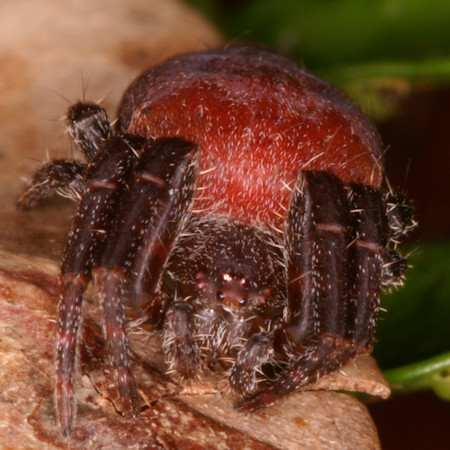 |
 |
| Cyrtophora exanthematica | Cyrtophora exanthematica |
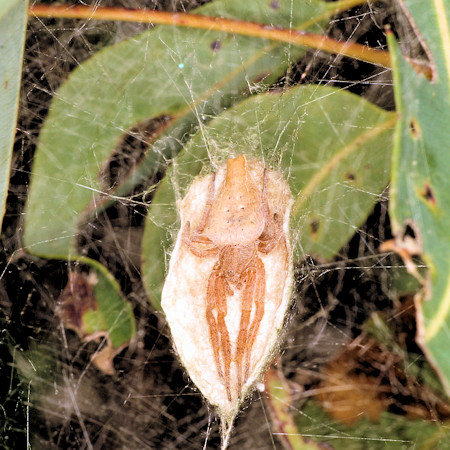 |
 |
| Cyrtophora exanthematica | Cyrtophora species frontal view |
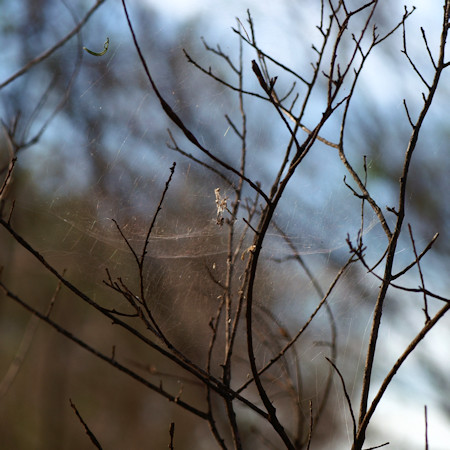 |
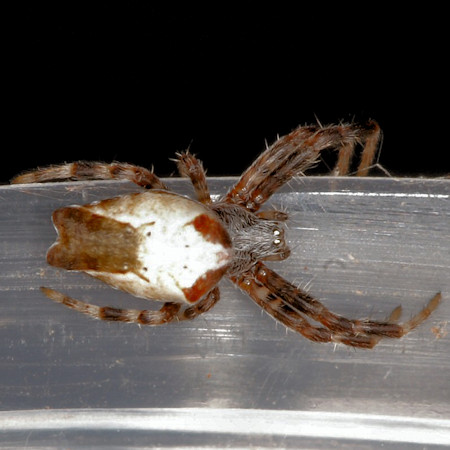 |
| Cyrtophora ZZ314 (WA) | Cyrtophora ZZ314 (WA) |
Ed Nieuwenhuys, 22 march 2023
5 february 2018, 1 april 2017, november 4, 2008, 4 May 2005
Copyright ã2002-2023